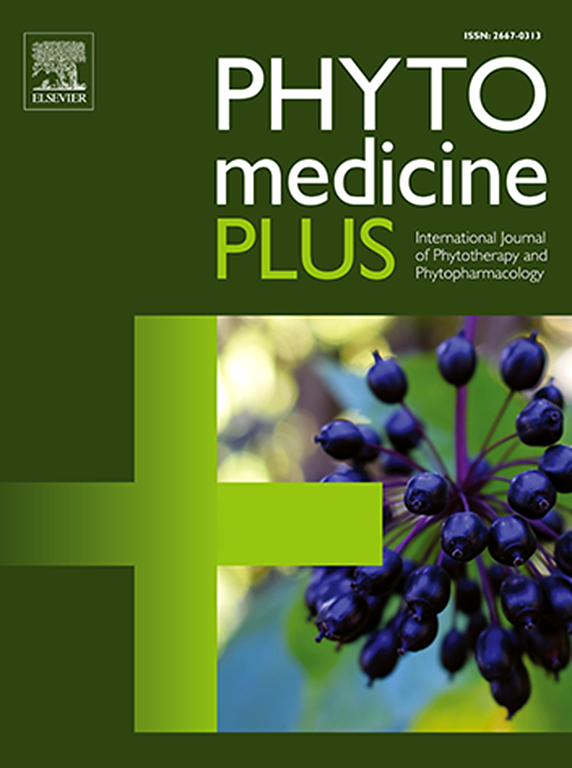Deciphering the role of materia medica in the primary healthcare needs and managing livestock diseases among the Batswana in South Africa
Q3 Pharmacology, Toxicology and Pharmaceutics
引用次数: 0
Abstract
Background
The Batswana descended mainly from Bantu-speaking tribes and regarded as an indigenous group in Southern Africa. Among this native group, medicinal plants play key roles for their primary healthcare needs and general well-being as well as managing livestock diseases.
Purpose
This study documented the ethnobotanical knowledge of medicinal plants used by the Batswana for managing their healthcare needs and livestock diseases in Mahikeng Local Municipality, South Africa.
Methods
A total of 128 participants comprising traditional healers and community members from 28 of the 35 wards in Mahikeng Local Municipality were interviewed, using semi-structured questionnaires. Ethnobotanical data including the local names, plant parts used, method of preparation and administration of the identified plants were documented. The data was analysed using relative frequency of citation (RFC) and use-value (UV).
Results
We recorded 100 plants representing 40 families used for alleviating 74 health problems affecting humans and livestock. The commonly treated health issues were dermatological (39 %), gastrointestinal (18 %) and respiratory (16 %) diseases. A total of 34 plants were used for treating diseases in humans and livestock. Based on the RFC values, the dominant plants were Hypoxis hemerocallidea Fisch.C. A Mey & Ave (0.73), Entada elephantina (Burch.) S.A.O’Donell & G.P. Lewis (0.66), Helichrysum paronychioides DC. Humbert (0.63) and Drimia sanguinea (Schinz) Jessop (0.63). In terms of UV, the top-ranked plants were Hypoxis hemerocallidea (0.18) and Entada elephantina (0.13). The dominant parts used for making herbal recipes were the leaves (27 %), roots (24 %) and whole plants (22 %).
Conclusion
The high number of plants recorded highlights the value and dependence on botanicals in folklore medicine among the Batswana. The current endeavour was vital towards preventing the erosion of important traditional knowledge and applications for the benefit of the present and future generations as well as potential downstream applications in the pharmaceutical and nutraceutical industries.

解读南非巴茨瓦纳人在初级保健需求和牲畜疾病管理方面的药物作用
巴茨瓦纳人主要来自讲班图语的部落,被认为是非洲南部的一个土著群体。在这一土著群体中,药用植物在满足其初级卫生保健需求和总体福祉以及管理牲畜疾病方面发挥着关键作用。目的:本研究记录了南非Mahikeng地方自治市巴茨瓦纳人用于管理其保健需求和牲畜疾病的药用植物的民族植物学知识。方法采用半结构式问卷,对来自马希坑市35个病区中的28个病区的128名传统治疗师和社区成员进行访谈。记录了民族植物学资料,包括当地名称、所使用的植物部位、制备方法和已鉴定植物的管理。采用相对被引频率(RFC)和使用价值(UV)对数据进行分析。结果我们记录了40科100种植物,用于缓解74种影响人类和牲畜的健康问题。通常治疗的健康问题是皮肤病(39%)、胃肠道(18%)和呼吸道(16%)疾病。共有34种植物被用于治疗人类和牲畜的疾病。根据RFC值,优势植物为萱草Hypoxis hemocalldea Fisch.C。A Mey &;Ave (0.73), Entada elephantina (Burch.)S.A.O 'Donell,G.P. Lewis(0.66),拟拟蜡菊DC。Humbert(0.63)和Drimia sanguinea (Schinz) Jessop(0.63)。紫外指数最高的植物为萱草(0.18)和象皮(0.13)。用于制作草药配方的主要部分是叶子(27%),根(24%)和整个植物(22%)。结论巴茨瓦纳族所记录的植物数量多,反映了巴茨瓦纳族民间医学对植物药物的依赖和价值。目前的努力对防止重要的传统知识和应用的侵蚀至关重要,有利于今世后代,也有利于制药和营养保健工业的潜在下游应用。
本文章由计算机程序翻译,如有差异,请以英文原文为准。
求助全文
约1分钟内获得全文
求助全文
来源期刊

Phytomedicine Plus
Medicine-Complementary and Alternative Medicine
CiteScore
3.70
自引率
0.00%
发文量
178
审稿时长
81 days
期刊介绍:
 求助内容:
求助内容: 应助结果提醒方式:
应助结果提醒方式:


